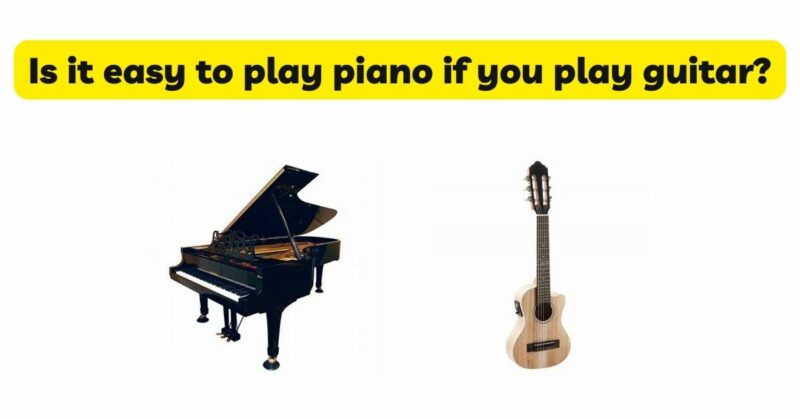Learning a musical instrument requires dedication, practice, and a deep understanding of its unique nuances. For individuals who have already mastered one instrument, such as the guitar, the question often arises: Is it easy to play the piano if you play the guitar? In this article, we will delve into the relationship between these two popular instruments, examine the similarities and differences, and explore the challenges and advantages faced when transitioning from guitar to piano. By understanding the transferable skills and the areas that demand additional effort, aspiring musicians can approach this musical transition with clarity and confidence.
- The Bridge of Musical Knowledge: When an individual has already acquired skills on one instrument, such as the guitar, they possess a solid foundation in music theory, rhythm, melody, and chord progressions. These fundamental elements are transferable across different instruments, creating a bridge of musical knowledge. Therefore, guitarists transitioning to the piano have a distinct advantage over beginners, as they already comprehend concepts like scales, harmonies, and basic notation.
- Shared Fundamentals: Both the guitar and the piano are polyphonic instruments, capable of playing multiple notes simultaneously. This similarity allows guitarists to transfer their understanding of chord structures and voicings to the piano. Familiarity with chord shapes on the guitar can be directly translated to the piano keyboard, enabling guitarists to quickly identify and play chords. Moreover, guitarists often possess a well-developed sense of rhythm and timing, which provides a solid foundation for learning complex piano rhythms.
- Adapting to a New Interface: Despite the shared fundamentals, the guitar and the piano have different physical layouts and playing techniques. Guitarists transitioning to the piano must adapt to the unique characteristics of the instrument. One significant change is the shift from plucking or strumming strings to pressing keys. This adjustment involves developing finger strength, independence, and accuracy, as well as building muscle memory for the piano’s keyboard layout. Guitarists must retrain their fingers to navigate the piano’s black and white keys, adjusting their technique and posture accordingly.
- Understanding the Keyboard: The piano’s keyboard layout provides a visual representation of music theory concepts, such as scales, intervals, and octaves. Guitarists can leverage their knowledge of fretboard patterns and transpose it onto the piano’s keyboard, enhancing their ability to play scales, arpeggios, and melodies. However, becoming proficient on the piano also requires learning the unique aspects of the keyboard, such as note names, sharps, flats, and the concept of two-handed playing. Developing this understanding is crucial for guitarists seeking to fully embrace the piano.
- Challenges and Advantages: Transitioning from guitar to piano presents both challenges and advantages. One significant challenge is the dexterity required to play multiple notes simultaneously using both hands. While guitarists are accustomed to using their strumming or picking hand, the piano demands the use of both hands to create intricate melodies and harmonies. Additionally, guitarists may initially struggle with the coordination and independence required to play different rhythms and melodies with each hand. However, with consistent practice and patience, these challenges can be overcome.
On the other hand, guitarists transitioning to the piano have several advantages. Their familiarity with music theory, chord progressions, and rhythm significantly reduces the learning curve. Moreover, their experience in composing and arranging music can be effectively applied to the piano, facilitating the creation of unique arrangements. The ability to read sheet music and understand musical notation is another advantage, as guitarists are often well-versed in reading guitar tabs or chord charts.
Conclusion: While transitioning from the guitar to the piano may present certain challenges, it is by no means an insurmountable task. Guitarists possess a solid foundation in music theory, rhythm, and chord structures, which serve as invaluable assets in learning a new instrument. With dedication, consistent practice, and a willingness to adapt, guitarists can leverage their existing knowledge and embark on a rewarding journey of mastering the piano. By embracing the unique characteristics of the piano and focusing on the areas that demand additional effort, guitarists can confidently explore new horizons in their musical journey.


